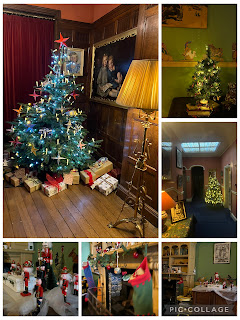... and just like that, another year winds down quickly & it is always a time to just take some moments to reflect on the year & how it has been. Do you find yourself evaluating how your year went? I think it is natural to review your year, mentally at least. After a year of highs & lows, striving & surviving, breathe & sit with the passing year.
Resist the urge to hurry this year out before its time, let it linger a little longer while you think about all the lessons it has brought with it; at least 365 lessons, which is only one a day in the greater scheme of things. Take note of the missed opportunities, the challenges, the things that did not go as planned.
It is important that you weathered the storms with resilience & fortitude. Life will always be a series of adventures & misfortunes & none will define us indefinitely, they are just natural bumps & delays requiring adjusting to the unexpected.
Life is meant to be experienced, not controlled so it is in the quiet moments when we catch our breath that we learn.
Some chapters don't need revisiting, you don't need a reason for everything that happened, you don't need to untangle it all - just let it go.
I will once again enter the new year with intent rather than resolutions, to invite growth & knowledge in to the coming year, to ease gently in to it all. There is no rush, it does not have to be hurried along, just a little movement towards a new day.
As time marches on, I am aware that I have less time ahead than the time I have already lived to it is natural to guard my time & energy more.
There is a need to make sure that friendships & other relationships are on even keel & that you are not always giving more than you are receiving. Carry the ones forward to those who loved & stood by you, who believed in you even when you didn't. They are your people, your tribe.
Let the others go, release what no longer serves you out of courage not defeat.
Life is never perfect, it is not meant to be; no one has it all figured out, we are all just making it up as we go along so don't let comparison be the thief of joy in your life. Carry only the lessons forward, not the weight of them.
I am joining a daily journaling group to give focus, reflection, & curiosity to another year, hoping it will bring clarity, freedom, purpose & understanding to my life. Some chapters will end, because they are done, the lesson is delivered & not every thing is meant to go forward with you each year.
Make peace with the year that is ending & look forward to the new year, trusting that you will figure it out, one day at a time ...
Thank you to each & every one who visits my blog, however briefly & for whatever reason. May 2025 be good to you,
Dee ⏳🕰️🥳⏰




























































